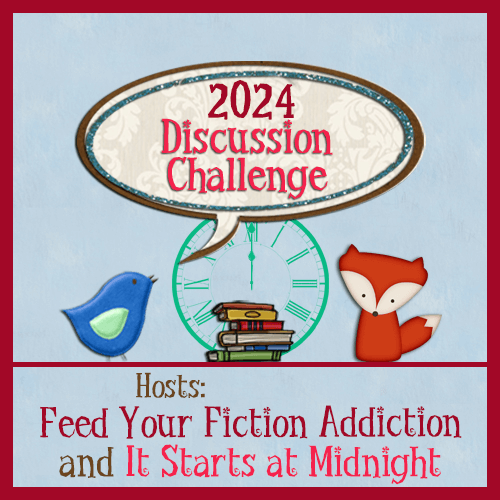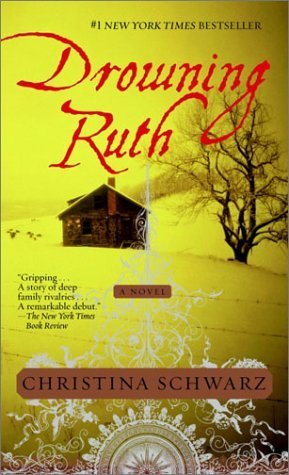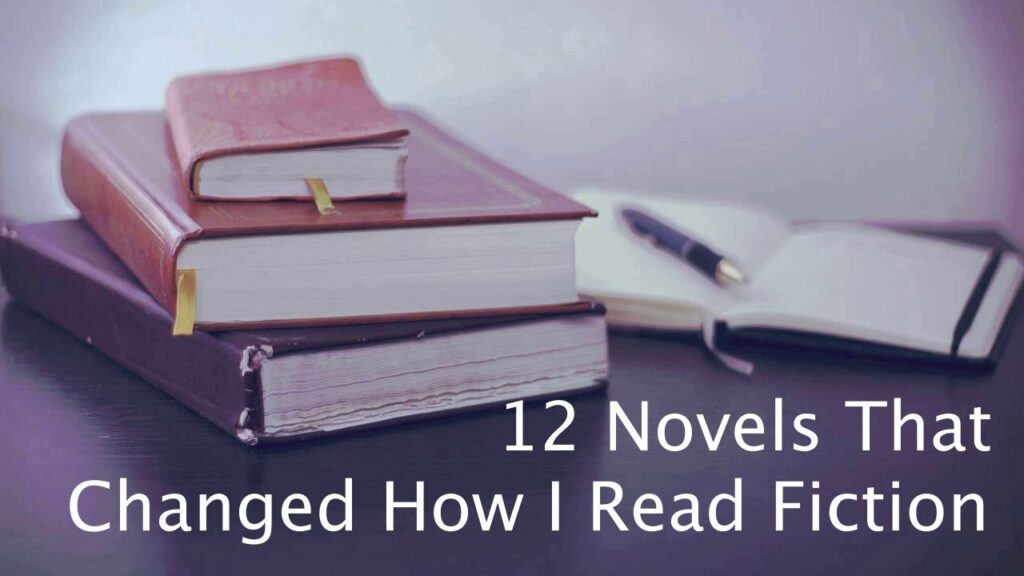Related Posts:
- Introduction & #1 All the King’s Men
- #2 A Portrait of the Artist as a Young Man & #3 The Murder of Roger Ackroyd
- #4 The Church of Dead Girls by Stephen Dobyns
- #5 The Debt to Pleasure by John Lanchester
- #6 The Short History of a Prince by Jane Hamilton
Thanks to these two bloggers for sponsoring the annual Blog Discussion Challenge:
- Nicole at Feed your Fiction Addiction
- Shannon at It Starts at Midnight


#7 Drowning Ruth by Cristina Schwarz
© 2000
Date read: 2/1/2001
Many of the themes that I’d been reading about since Portrait of the Artist come together in this novel: how childhood informs the adults we become, how people who share the same experience react to and remember it differently, how time and context contribute to the development of our beliefs and values.
Although I hadn’t yet learned about narrative identity, this novel showed me how people long for a story that explains how they’ve become who they are. Schwarz uses several literary techniques to demonstrate how the search for such a story unfolds.
To avoid giving away too much of the story, I’ll start with the book description from Goodreads:
In the winter of 1919, a young mother named Mathilda Neumann drowns beneath the ice of a rural Wisconsin lake. The shock of her death dramatically changes the lives of her daughter, troubled sister, and husband. . . . Told in the voices of several of the main characters and skipping back and forth in time, the narrative gradually and tantalizingly reveals the dark family secrets and the unsettling discoveries that lead to the truth of what actually happened the night of the drowning. . . .
Schwarz skillfully moves between time periods in a way that taught me a lot about narrative structure. At its root, narrative is the presentation of events in chronological order: First this happened, then that happened, then the next thing happened. But in telling this story, Schwarz abandons chronological order to create tension, expectation, and suspense. She uses what I’ve come to think of as the descending spiral narrative structure. The story begins by circling widely around the significant events, then proceeds in ever-narrowing circles as it moves downward, closer and closer to the most significant revelation.
In addition to narrative structure, Schwarz uses multiple points of view to build the story toward its climax. By letting all the characters reveal their thoughts, emotions, and desires, she develops a rich, meaningful story with deep, memorable insights into human nature.
© 2024 by Mary Daniels Brown


This book sounds like one I’d enjoy!
It’s very well done. Most people in my library book group liked it.
I love your deep dives into book which changed you as a reader. I am continually impressed by your depth of thought on the topic. I think if I were to do the same thing my analysis would be so shallow, sadly. I’m off to catch up on the books I’ve missed since the last time I visited.
My discussion topic also involves the topic of twelve but it asks if you agree with the list of 12 best books.
Thanks for your kind words, Anne. I believe that most people who love to read have meaningful experiences with books even if they don’t have all the vocabulary necessary to articulate their reactions. My past experiences in book groups confirmed this belief. I’m sad that I haven’t found any groups nearby since we retired. Read on!